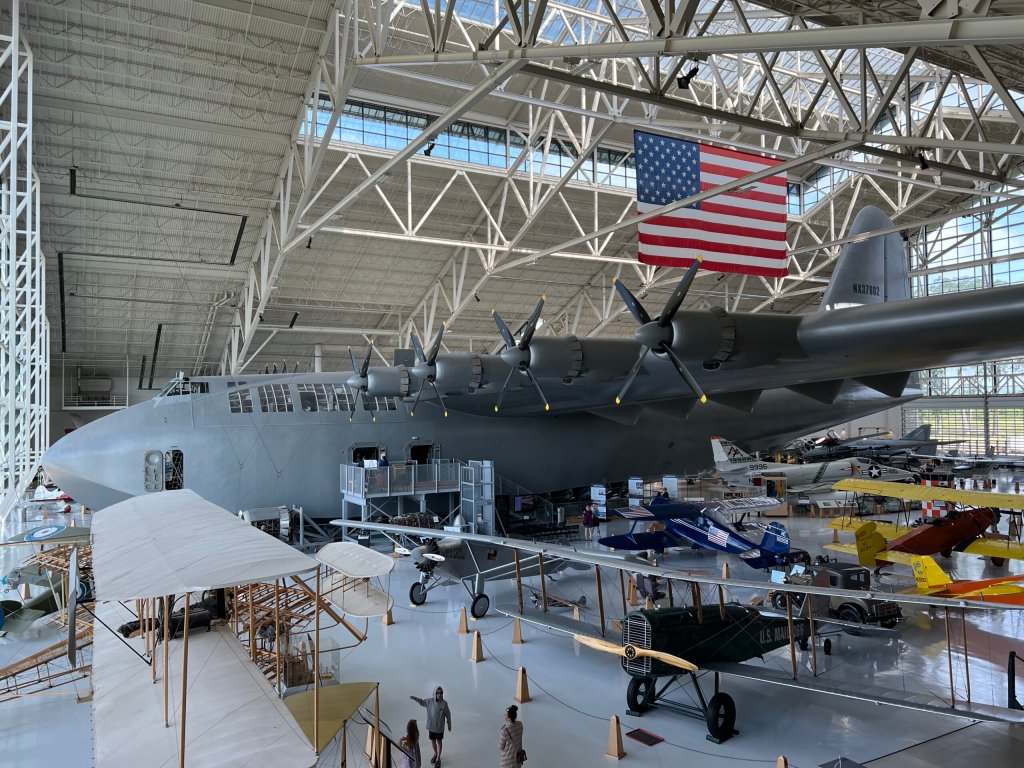The Hughes H-4 Hercules is a monumental achievement of aeronautical engineering. Designed during WWII to ferry troops and even tanks across the Atlantic, out of reach from German U-boats, the construction of the enormous flying boat was a passion project for Howard Hughes. Critics doubted the airworthiness of the massive wooden plane and nicknamed it the “Spruce Goose,” a name that Hughes detested. The Hercules made one flight in California, proving its critics wrong, and is now preserved at the Evergreen Aviation & Space Museum in Oregon.
Here are five things you may not have known about the H-4 Hercules “Spruce Goose”
1. Birch not spruce

Despite its catchy nickname, the Spruce Goose is not made of spruce. Rather, it is made almost entirely out of birch. Aluminum was considered a strategic war material and the Hughes Aircraft Company was not allocated enough of the metal to build the giant flying boat. Undeterred, Hughes elected to build the plane with birch using the Duramold process. The birch was impregnated with phenolic resin and laminated together in a mold. Heat and pressure strengthened and shaped the composite to create a lightweight but durable construction material. The birch wood veneer was manufactured and ironed in Wisconsin before it was shipped to California for construction.
2. Specialty equipment

Building such a large aircraft out of wood required specialized equipment that the aviation industry wasn’t accustomed to. In order to prevent scuffs in the wood, Hughes required all workers to wear soft cotton socks over their shoes in and around the Hercules during construction. Additionally, the wood used to build the aircraft had to be glued and nailed together. After the glue dried, the nails had to be removed. To speed up the assembly process, engineer Morris Pynoos invented the first nail gun. The specialty tool was also able to remove the nails.
3. Creature comforts

For the long flight across the Atlantic, the Hercules was equipped with coffee stations on both the cargo deck and the flight deck above. There was also a central air conditioning unit to keep passengers comfortable. Hughes, however, had an individual air conditioning duct run from the central unit directly to the pilot’s position in the cockpit. Similarly, he insisted that controls for all eight engines be placed in the cockpit and not at the engineering station.
4. Beach ball floats

As a flying boat, the Hercules had a hollow lower hull and wing floats that allowed it to takeoff and land on the water. Still, Hughes feared that the aircraft could sink in the event of an accident. To address this, he had the H-4’s original clamshell cargo nose doors replaced with a solid nose. Additionally, Hughes had the lower hull and wing floats filled with inflated rubber bladders and beach balls for insurance buoyancy. The beach balls were left inside the wing floats and not discovered until the Hercules’ reassembly at the Evergreen Museum in 2001.
5. Maintained in flying condition
The H-4 Hercules flew just once on November 2, 1947. Hughes flew the aircraft for 26 seconds at 70 feet above the water over a distance of about one mile. With WWII over and the plane unneeded by the military, Hughes made the flight to preserve his reputation, which he staked on the largest aircraft ever built at the time. After the flight, the Hercules was kept in a climate-controlled hangar and maintained by a secret team of 300 full-time workers at Hughes’ direction. In 1962, this team was downsized to 50 workers and ultimately disbanded following Hughes’ death in 1976.


